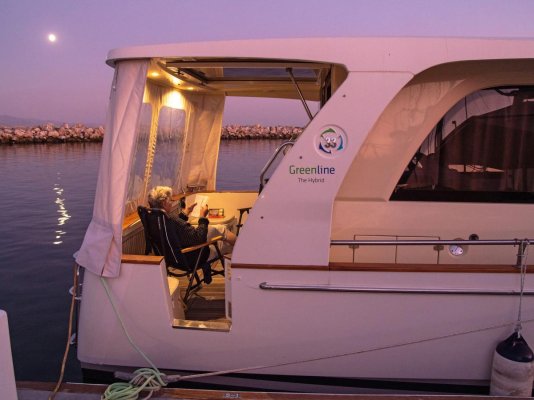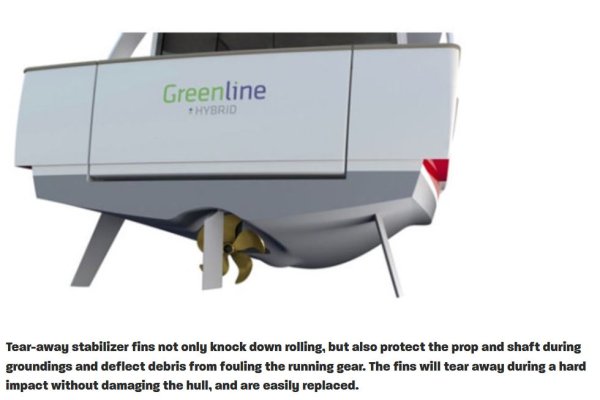Hi DDEvlinJr,
I have had my GL33 Hybrid for going on 11 years now. I have given a GL39 a sea trial, but it was the diesel-only version, which was the only model the dealer had available at the time. Nevertheless, I have studied the GL39 Hybrid a lot, as I had considered trading up at one point. From the electric propulsion performance perspective, there is a reasonable similarity in specs between the two models. As such, you might find my comments and opinions below useful, as you weigh the pros & cons.
I can enjoy 5.5 knots SOG (max electric speed, when fully loaded) for about 90 minutes in calm seas, with little wind and no current. If I travel at 3.5-4.5 knots in similar conditions and it's a fairly sunny day, I'm good for 3-4 hours. On a completely sunny day, I can go 2.1 knots on solar alone (i.e. without drawing the battery down at all). I realize 2.1 knots is not very exciting for most boaters, but it's nice to know it can be done as a "get home" strategy, if the diesel engine should happen to fail.
The keys to enjoying the performance I described above are weather and sea conditions. I spend a lot of time cruising in reasonably protected waters, as well as rivers and canals. For this kind of cruising, electric is a joy. When I travel in more open waters, like the Baltic Sea, electric is not so practical, hence I use diesel. I have no exact measurements for using electric at sea under less-than-ideal conditions, but my experience over the years with this suggests that if you travel under electric power in a ~1 foot chop, with no current and wind coming at you at a speed <7 knots or so, you could expect a SOG of ~4.8 knots for around 90 minutes. Or a SOG of 3.0-4.0 knots for 2.2-3.2 hours before running out of juice. For ~2 seas, I would think the numbers would be ~3.5 knots for 90 minutes our 2.5-3.2 knots for 2-2.5 hours. Not worth the extreme slowness and bother, really. For 3 foot seas on a GL33, I wouldn't dare try it. This is a challenging and uncomfortable ride for a GL33, even when running on diesel. In the event you want to turn 180 degrees and take a following sea for a breather, you need to execute that 180 FAST. This couldn't be done using electric. Being larger, I'm sure a GL39 might be a bit friendlier in 3 foot seas, but I still would not plan on using electric.
One benefit that's rarely discussed in all these hybrid/electric pro & con threads is the fact that a hybrid setup enables the presence of 230/120v house current 24x7 without having to run a generator. I enjoy this benefit just about as much as the silence of cruising on electric. In fact, if the propulsion feature of hybrid were removed, I would still probably buy hybrid again just for the 230/120v house current feature.
I have close to zero awareness of west-coast US weather & sea conditions. From what I read in TF, however, it sounds like the PNW would not be very conducive to electric cruising. Perhaps there is one exception. Fog. Given calm seas, in thick fog, I am always thankful I have the option to move ahead using electric. It gives me a much better possibility to listen for what might be out there.
I see you're from LA...so maybe weather & sea conditions are perpetually better there??? I recommend you try to find a GL39 Hybrid for sea trial.
Good luck with your research!




